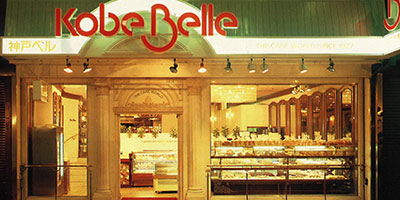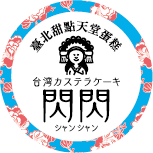KobeBelle Story
昭和2年(1927年)
東中清一が「東京木村屋」の名称で、パン・洋菓子の製造販売と喫茶店の営業を神戸の地で始めました。

昭和11年(1936年)
商売は順調に進み、新店舗をオープン。

昭和22年(1947年)
太平洋戦争で焦土と化した日本。当社の事業もすべてが灰燼に帰しました。戦災から立ち直ろうとする神戸で、東中はさまざまな試練を乗り越えて、1月現在の「三宮センター街」営業を再開しました。フランス菓子の製造販売に着手しました。
昭和29年(1954年)
商号を「ベル」に変更。この年、第一回全国洋菓子展示会にて農林大臣賞を受賞。
その間も技術者をヨーロッパから招き、技術指導を受けよりよい商品づくりに邁進してきました。

平成7年(1995年)
兵庫県南部地震により、工場も店舗も大きな被害を受けました。しかし、震災に屈することなく、本社工場は4月から復旧し悲しみに沈む神戸の街で新たな一歩を踏み出しました。
平成15年(2005年)
このころより高速道路のサービスエリアが新しい有り方へを求めるようになりました。従来の「休息する場所」から「より楽しく過ごす場所」へと変わりつつあったなか、ベルは新たな展開をサービスエリアで、今まで培った技術を以って商品開発を進めました。
In 1927, Seiichi Tounaka founded the Kobe confectionery/cafe, naming it Tokyo Kimuraya.
In 1936, after an initial success, a second shop opened.
In 1947, facing the aftermath of World War II, many Japanese businesses were left smoldering in ashes.
Mr. Tounaka overcame a number of challenges to rebuild his French confectionery, launching production and distribution arms.
In 1954, the company's name changed to “Belle,” the French word for “beautiful.” Current CEO Hiroyoshi Tounaka did so to make the company more familiar and easier to read.
Meanwhile, skilled pastry chefs from Europe were invited to give technical training to improve quality.
A huge earthquake occurred. Shops and Factories were severely damaged. In spite of the disaster, the main factory recovered quickly and resumed operations just a few months later. This was a big step toward the recovery for devastated people of the region.
From 2005, the role of service areas started changing. No longer locations where people stretched their legs and used restrooms, they became places of enjoyment. Belle developed new products to reflect its acclimation to that change.







